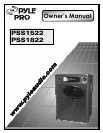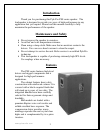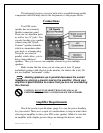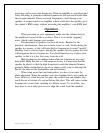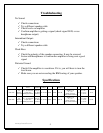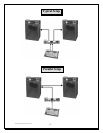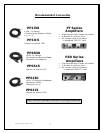
4
powering can be even more dangerous. When an amplifier is overdriven and
starts distorting, it generates transient frequencies that are much louder than
the program material. These wayward frequencies could damage your
speaker. A proper match is an amplifier which could drive the speaker up to
the cabinet’s RMS rating, without exceeding the amplifier’s own RMS level.
Operation
When powering on your equipment, make sure the volume level on
the amplifier is turned all the way down. This is to avoid the “popping”
noise, which could damage your speaker.
The placement of speakers can be a bit tricky. Besides for the
practical considerations, there are acoustic issues as well. Avoid placing the
speaker in a corner, as this will cause the low frequencies to sound “muddy”.
Similarly, but to a lesser degree, placing the speaker directly against the wall
will exaggerate the low frequencies. You should therefore try to place your
speaker so that it is a few feet away from the wall.
High frequencies are unidirectional while low frequencies are omni
directional. Being that this is a full range enclosure, it is important that the
speaker be placed so that the high frequencies reach the intended listeners
properly. Make certain that no person or object could come to interrupt the
line-of-site between the loudspeaker and the audience.
When using more than one loudspeaker, you have to account for
phase alignment. When the speakers are close together this is not usually an
issue. However, when they are far apart, the sound from one speaker may
reach the ear a fraction of a second before the other. This will cause certain
frequencies to cancel out, resulting in a hollow sound. To avoid this, you
may have to use a delay processor to align the sound from the speakers.



